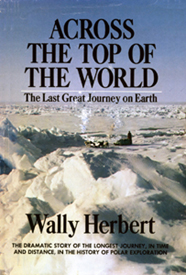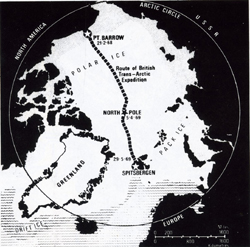In This Issue....
From the Editor:
Unfinished Business
FIDO: Leevan Etok
Fan MailIn the News
Happy Tenth Anniversary, ISDI
Sledge Dog Memorial Fund Update
Inuit Dog Research Project Underway
The Canadian Animal Assistance Team
The Chinook Project Goes to Cambridge Bay
Hints and Tips: Building a Dog Box, Pt. 1
Navigating This
Site
Index of articles by subject
Index
of back issues by volume number
Search The
Fan Hitch
Articles
to download and print
Ordering
Ken MacRury's Thesis
Our
comprehensive list of resources
Talk
to The
Fan Hitch
The Fan
Hitch home page
ISDI
home page
Editor's/Publisher's Statement
Editor: Sue Hamilton
Webmaster: Mark Hamilton
The
Fan Hitch, Journal of the Inuit Sled
Dog, is published four times a year. It is
available at no cost online at:
https://thefanhitch.org.
The Fan Hitch welcomes your letters, stories, comments and suggestions. The editorial staff reserves the right to edit submissions used for publication.
Contents of The Fan Hitch are protected by international copyright laws. No photo, drawing or text may be reproduced in any form without written consent. Webmasters please note: written consent is necessary before linking this site to yours! Please forward requests to Sue Hamilton, 55 Town Line Rd., Harwinton, Connecticut 06791, USA or mail@thefanhitch.org.
This site is dedicated to the Inuit Dog as well as related Inuit culture and traditions. It is also home to The Fan Hitch, Journal of the Inuit Sled Dog.
The Fan Hitch welcomes your letters, stories, comments and suggestions. The editorial staff reserves the right to edit submissions used for publication.
Contents of The Fan Hitch are protected by international copyright laws. No photo, drawing or text may be reproduced in any form without written consent. Webmasters please note: written consent is necessary before linking this site to yours! Please forward requests to Sue Hamilton, 55 Town Line Rd., Harwinton, Connecticut 06791, USA or mail@thefanhitch.org.
This site is dedicated to the Inuit Dog as well as related Inuit culture and traditions. It is also home to The Fan Hitch, Journal of the Inuit Sled Dog.
 |
Across the Top of the World – The Last Great Journey on Earth
by Sir Wally Herbert
reviewed by Janice Dougherty
When I paged through my Monday morning paper (The NYTimes) on June 18, 2007, I saw the obituary of "Sir Wally" from the previous Tuesday, and dutifully clipped it out for insertion in the back of my copy of this book. Mine is a discarded library piece from Vermont – my good fortune, their loss. I noted from the marker that I had not finished reading the book, and set it on my pile of down time reading. Always good to read about the cold in the summertime.
This book provides an intimate, personal yet professional, detailed account of a challenging, often harrowing journey of 3,620 route miles (5825 km) from Point Barrow, Alaska on February 21, 1968, across the Arctic Ocean via the North Pole to the end of the seasonal icefloe off the coast of Spitsbergen, at 1900 hrs GMT, May 29, 1969. Herbert was already a veteran of cold places and like all savvy explorers, dutifully studied the experiences of his also famous predecessors as well as heeding the wisdom of the Inuit people. Analytic, introspective and filled with logistic detail, the book will always be a resource for those who wish to study or seriously engage the Arctic on their own. There is also considerable attention given to introspection and the dynamics of the human personalities. The language is clear, eloquent and often has a lyrical quality – you can see where Sir Wally was also a painter in some of the intensely visual passages where author and artist merge.
Of the thirty-four black and white photos in the book, approximately a dozen include dogs, although mostly small and distant – not many detailed, close ups of the dogs which were previously obtained in the Thule District of Greenland. "More often than not, it was obvious that the dogs we were being offered were the outcasts of the pack, but since we knew that there were few if any useless dogs in the Thule District, we accepted gratefully any we were offered that did not cower or respond with a snarl as we approached to examine them more closely for bites and harness sores…We paid according to the size and age of the dogs." (p.57) The word "dog" appears on almost every other page, more at times, but passages specifically about dogs, their behavior or the phenomenal endurance that made this epic possible are scant to nil. While Sir Wally's post-exploration years artistry as a painter included dogs as integral parts of his experiences - ever-present partners, not just part of the equipment - Across the Top of the World is not as emphatic on that point. Perhaps he felt it was implied and not necessary to state in words. There is a phrase (p.70) describing the dogs as "unresponsive to whips that did not crack…"; and a description of "watching the Eskimos knock the back teeth out of the heads of two of the dogs in my team; an operation which they said would put an end to the habit of harness chewing" (p.80). There is also a paragraph relating the unavoidable end of four pups eaten by the team dogs (p. 100). Not that there is any impression that dogs were not well planned for. Early on he wrote "in Barrow I had based the size of the teams on the assumption that one dog in ten would either prove incurably neurotic; too old for the journey, or so unpopular that his teammates would kill him at the first opportunity." (p. 151)
 |
While this was nearly forty years ago, there was a sense of impending weather changes and global warming that would upset this fragile ecosystem, making a modern day repeat attempt unattainable. Sir Wally has left us an important recording of a first hand experience that cannot be duplicated.
Editor's Note:
Sir Wally Herbert, knighted by Queen Elizabeth II in 2000, passed away on June 12, 2007 in Scotland at the age of 72. He was twice awarded Great Britain's Polar Medal, and mountains on two continents were named after him. In addition to his accomplishments as a member of the Falklands Islands Dependencies Survey (later to become the British Antarctic Survey), as a world renowned polar explorer and as an author, Sir Wally was a talented artist who took much of his inspiration from his life experiences in polar regions, including his relationship with the Inuit and Inuit Sled Dogs. Some of his work can be seen at Polarworld Ltd and in his last book, The Polar Word, scheduled for release as a general hardback edition on October 1, 2007.
Return to top